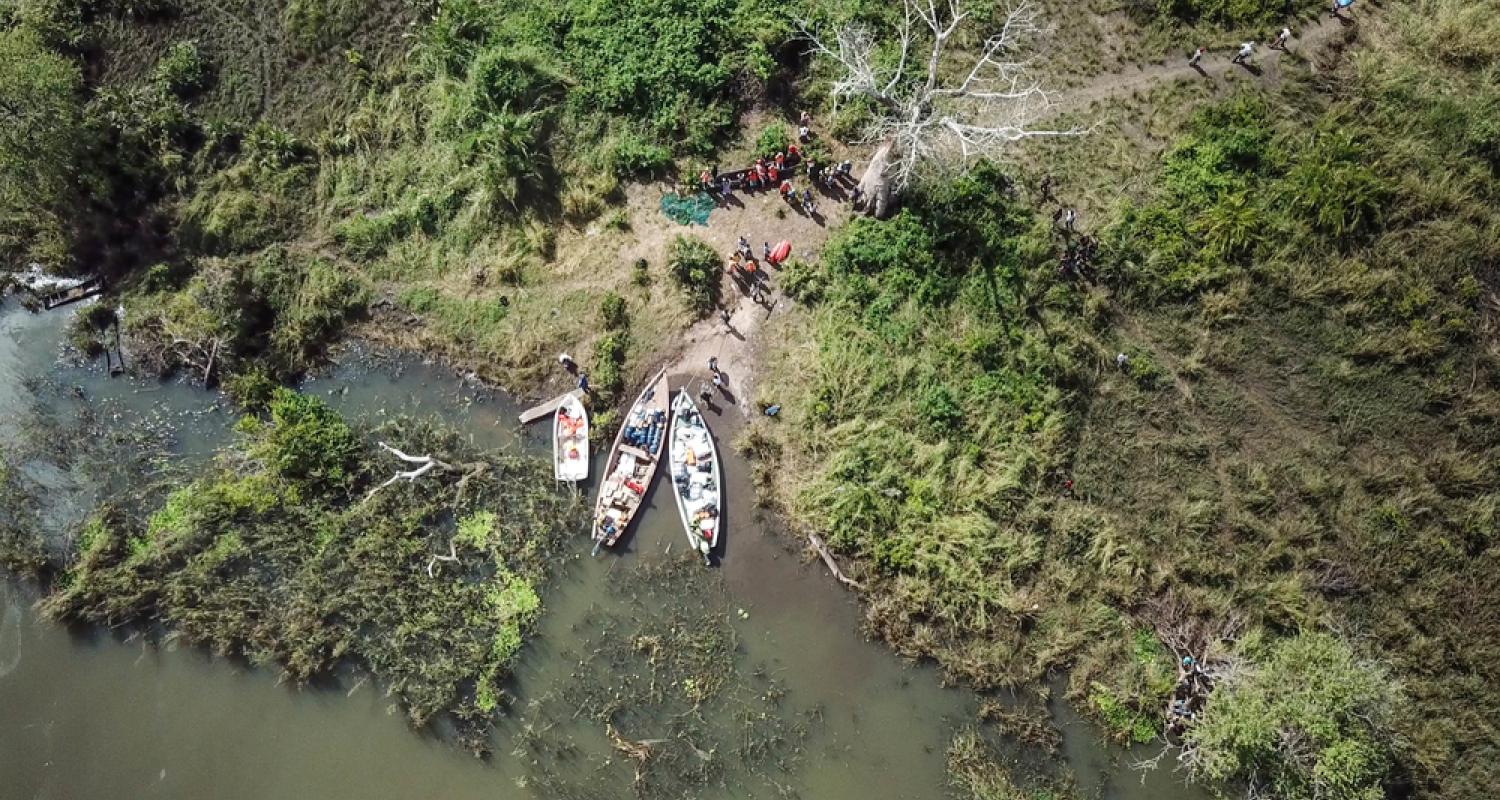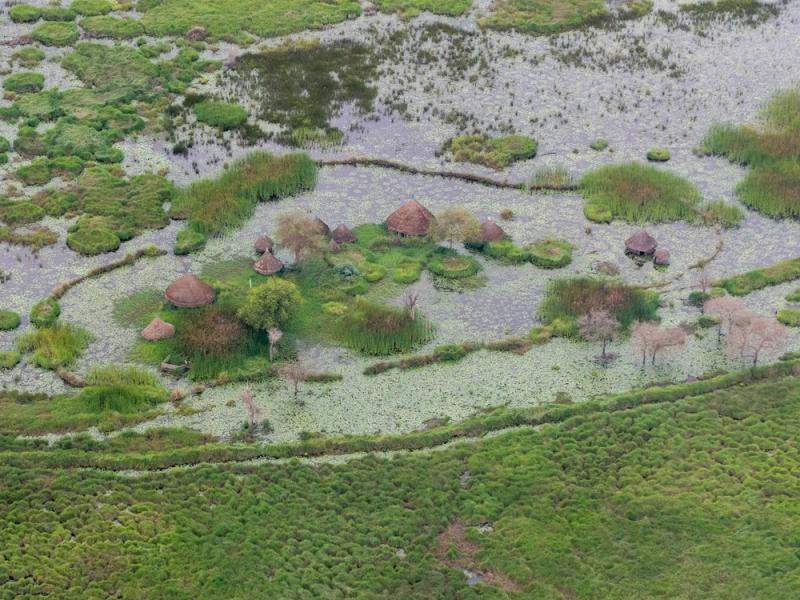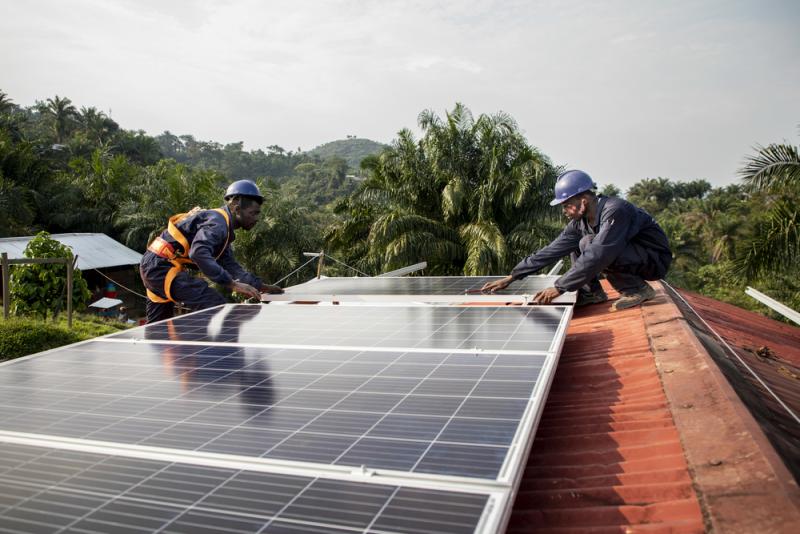In multiple countries where we work, our medical humanitarian teams are responding to situations that are linked to or aggravated by climate and environmental change. These include infectious diseases transmitted by insects - such as malaria, or in water - such as diarrhoea, which are affected by changing temperature and rainfall patterns. They also include malnutrition, for example due to prolonged droughts, and other extreme weather events such as cyclones and floods which are becoming more frequent and severe.
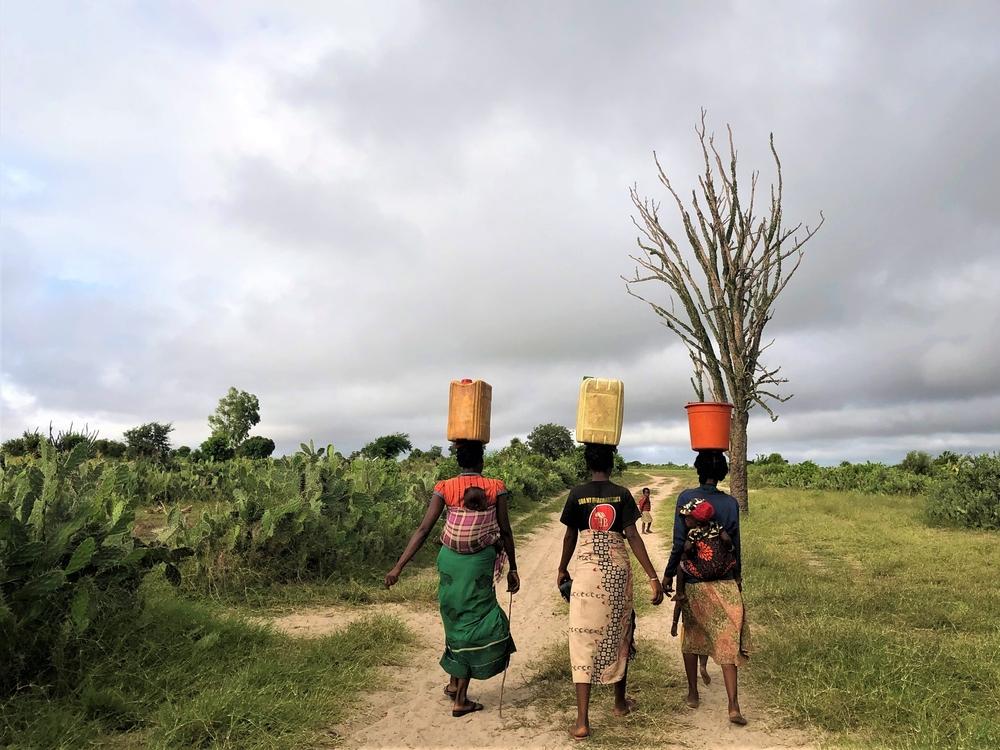
Three women return to their village after collecting water from a water distribution organised by Doctors Without Borders teams in the village of Fenoiva. Madagascar, 2022 © Lucille Guenier/MSF
In all regions, extreme heat events are causing increased human mortality and morbidity. The incidence of vector-borne diseases is increasing, and so is the occurrence of climate-related food-borne and water-borne diseases.
Food insecurity and malnutrition are likely to increase in certain areas, particularly in Africa, linked to climate change and environmental degradation.
Impacts on health
Temperature changes, floods and droughts can disrupt food production and can contribute to food insecurity, which can lead to malnutrition, including undernutrition, overweight and obesity.
Globally, 11.7 per cent of the population is suffering from severe food insecurity.
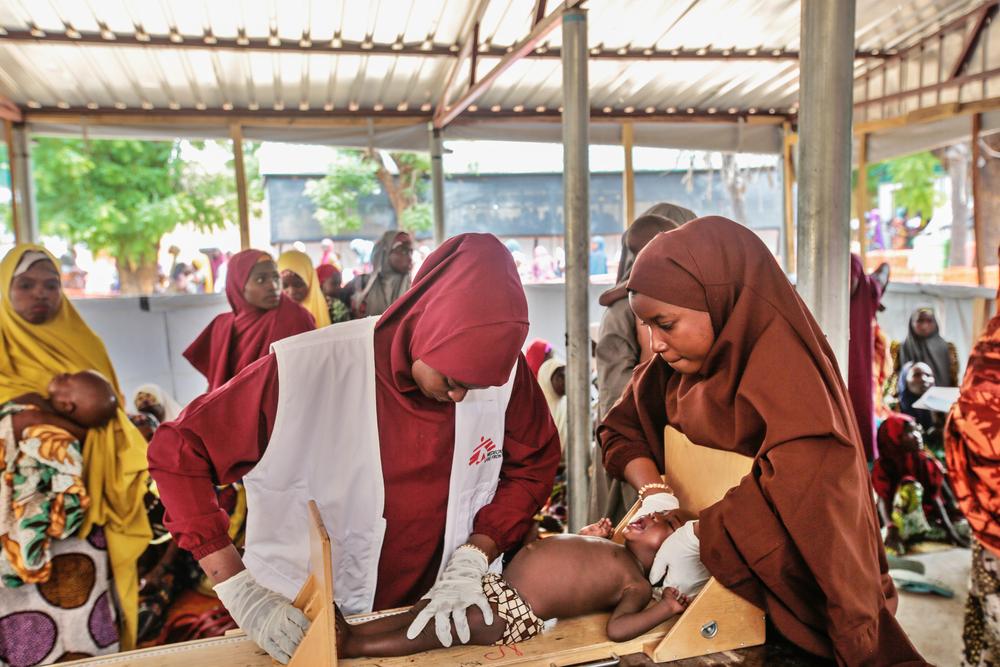
In northwest Nigeria, a malnutrition crisis has been unfolding since 2022. From January to July 2022, Doctors Without Borders teams, working in partnership with Nigerian health authorities in five northwestern states, treated more than 50,000 children with acute malnutrition, including 7,000 who required hospital care.
Above, a Doctors Without Border staff is checking a child at Kofar Marusa ATFC, Katsina State. Nigeria, June 2022. © George Osodi
Malaria and dengue are vector-borne diseases, meaning they are transmitted from vectors—such as mosquitoes—to humans. Changes to ecosystems (how plants, animals, and other organisms interact), as well as many other factors, lead to increases in the geographic spread and breeding season of such insects and other microorganisms that spread disease.
In South Sudan, malaria is the leading cause of death in the country. According to latest available data, a total of 4,064,662 cases were confirmed there in 2019, and more than 4,800 people are known to have died from the disease during the same year.
In 2021, Doctors Without Borders, in collaboration with the Ministry of Health, launched a program to prevent malaria in Aweil, the capital of South Sudan's Northern Bahr el Ghazal State. It is called seasonal malaria chemoprevention (SMC). Its purpose is to prevent infection and serious illness among children from 3 to 59 months by providing them with antimalarial medications once a month during the rainy season.
Below are young Zara (age unknown), who has malaria, and her worried mother, 35-year old Elizabeth Thom, in Doctors Without Borders-supported Aweil State Hospital, South Sudan, October 2021. ©Photo credit: Adrienne Surprenant/Item
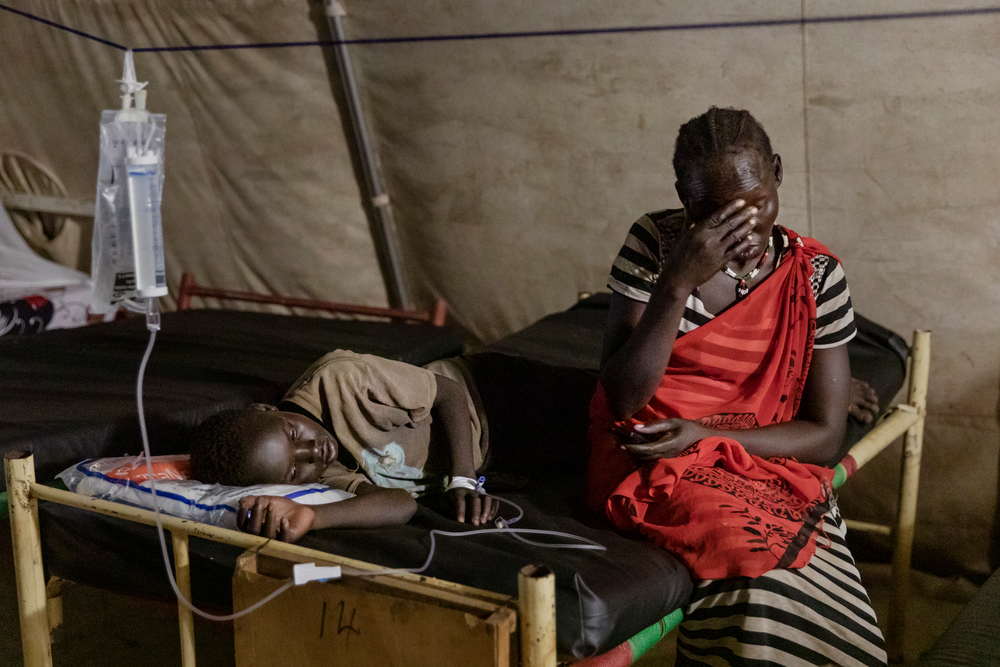
In Pakistan, weeks of flooding in 2022 left water sources contaminated, and populations at higher risk for dengue, which was already endemic in the country.

Among the non-food items distributed by Doctors Without Borders after the floods were mosquito nets, following an increase in dengue and malaria. Dadu district, Sindh, Pakistan. 2022 © Asim Hafeez
- Kiribati
The country of Kiribati is composed of 32 atolls (and one raised coral island) lying between Australia and Hawaii. The country covers just 811 square kilometres of land in a vast ocean area of 3.5 million square km.
Half of Kiribati’s total population (estimated at 120,000) live in the capital, South Tarawa. Slim strips of land shaped like a boomerang, the main island can barely accommodate all her people. A result of a brisk birth rate (26 births per 1,000 people), and urbanisation on South Tarawa due to migration from outer islands, overcrowding exacerbates health and social problems and environmental issues.
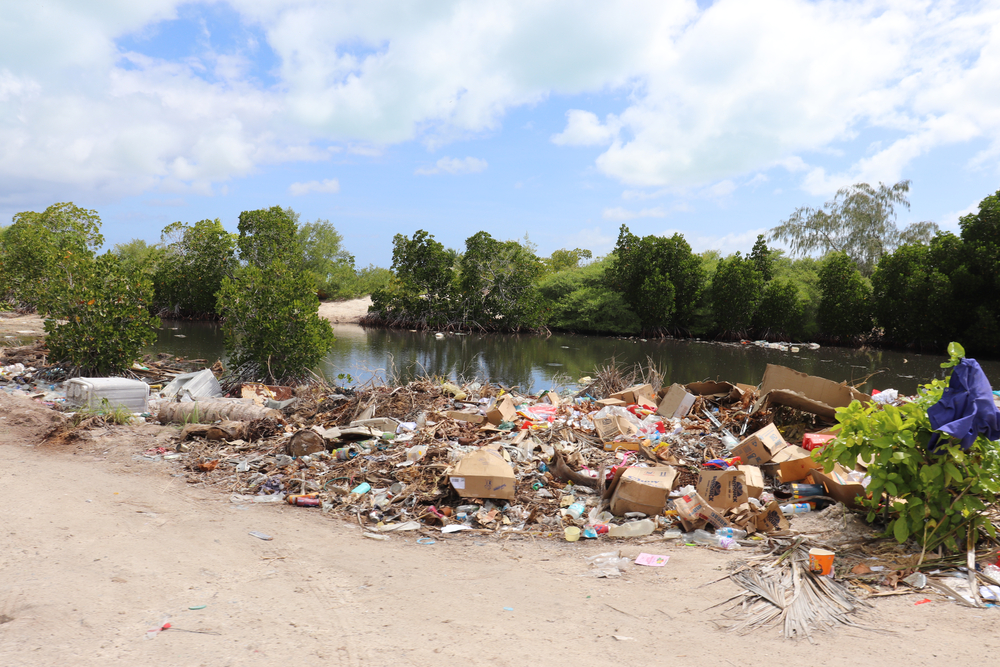
The coastal section of this village was abandoned when seawater flooded homes. Now seawater fills the lower lying land and encroaches on homes. Tyre retaining walls are no match for the rising sea.
Alongside the threat of a rising sea, and inland flooding, people are affected by a shortage of clean water. On Tarawa, Kiribati, well water is heavily overdrawn and contaminated by sea water, waste, and open defecation, as well as raising pigs next to the home, and the practice of burying relatives next to the home. Photo credit: Joanne Lillie/MSF
Kiribati has one of the highest burdens of disease in the world, including the highest incidence of leprosy, one of the highest of tuberculosis and diabetes; and some of the lowest access to primary healthcare.

Doctors Without Borders logistics coordinator Thomas Hing enters the Tekabwibwi clinic. To his left is a home-made scale made out of a grain sack for keeping track of babies’ weights.
Seventy-five percent of deaths in the Pacific region are due to NCDs, and NCDs are now recognised as the leading cause of health problems in Kiribati. The rates of diabetes in Kiribati are high and increasing.
“Diabetes in pregnant women is of particular concern as the condition can be high risk for mums and babies, who require access to secondary (specialist) care for management during labour, delivery, and after birth,” says Doctors Without Borders project medical referent in Kiribati, midwife Sandra Sedlmaier-Ouattara.
Doctors Without Borders' work in Kiribati aims initially to improve diabetes detection and management and hypertension related to maternal health in the Southern Gilbert Islands, based at Tabiteuea North. Photo credit: Manja Leban/MSF
The country’s fragile situation is threatened by a changing climate. The vast majority of households reported climate impacts back in 2016, with 81 per cent already directly affected by sea level rise.
Kiribati’s small land mass is particularly vulnerable to a rising sea - the highest point on Tarawa is just three metres above sea level. Evidence of land shrinkage due to erosion is everywhere. In some places, uprooted trees lie where picnic spots and beaches once were. Homes are abandoned as the water comes closer and sandbags line the edges of the coast like chains of reinforcement. At full moon high tide, waves crash across the main causeway and flood homes.
- Madagascar
Situated off the eastern coast of Africa, Madagascar is geographically vulnerable to cyclones and storms.
In February 2022, cyclones Batsirai and Emnati hit the east coast of Madagascar, destroying numerous healthcare centres. More than 300,000 people were affected, as well as almost the entire agricultural area in several regions, including more than half of people’s food crops. At the time, people in the southern part of the country are just recovering from the effects of an exceptionally severe drought, which caused alarming levels of malnutrition.
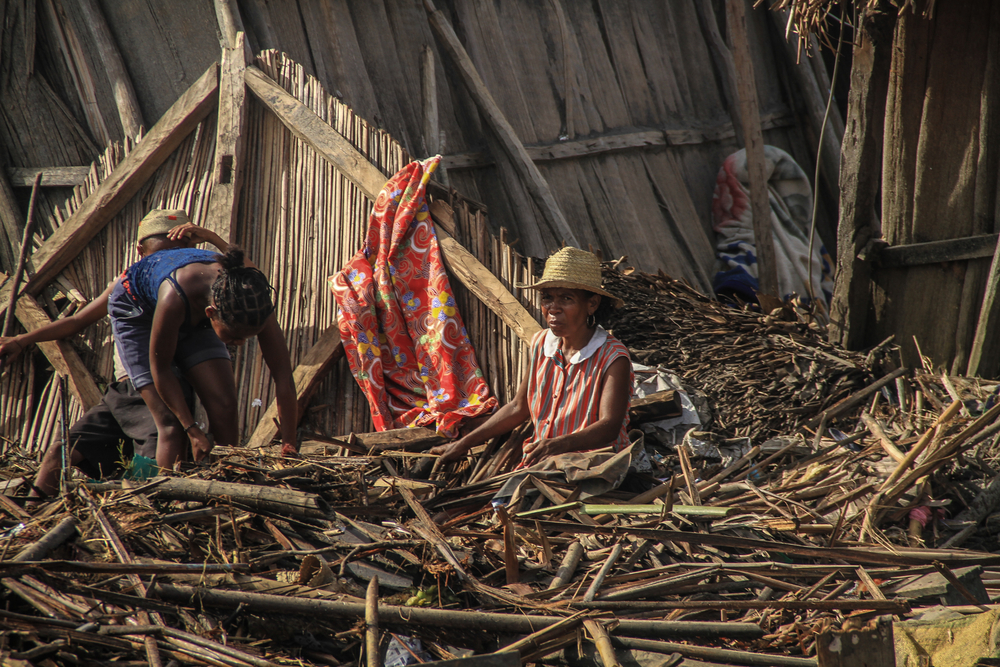
Homes and a health center in Mananjary City were damaged by Cyclone Batsirai, which hit Madagascar on 5 February, 2022. © Ahmed Takiddine Sadouly/MSF
But Madagascar also experiences other extreme weather phenomena: years-long periods of drought. Rivers and springs have dried up, severely compromising harvests, leading to major nutrition crises. Fish have become much harder to find, reducing the income of fishermen by almost 90 percent. With the changing climate, sometimes dry, sometimes rainy, it has become difficult to grow rice and other crops.

Doctors Without Borders running water distribution in the village of Fenoiva, Madagascar. 2022 © Lucille Guenier/MSF
- Bangladesh
Bangladeshis have coped with cyclones, floods and environmental catastrophes for generations, but what is new is the frequency and intensity of events. All coastal and adjacent inland areas of Bangladesh are at risk from the impacts of tropical cyclones, especially severe flooding of coastal cities and damage of essential infrastructure. In addition to coastal impacts, tropical cyclones can cause heavy precipitation, landslides and heavy wind far from the coast.
While the whole country is at risk, the impact is felt by the most vulnerable, such as the Rohingya refugees and the host population at Cox’s Bazar. The camps already suffer from inadequate sanitation infrastructure and insufficient availability of water. The accumulation of contaminated water in the camps has been found to be a breeding environment for mosquitoes that spread malaria and dengue.
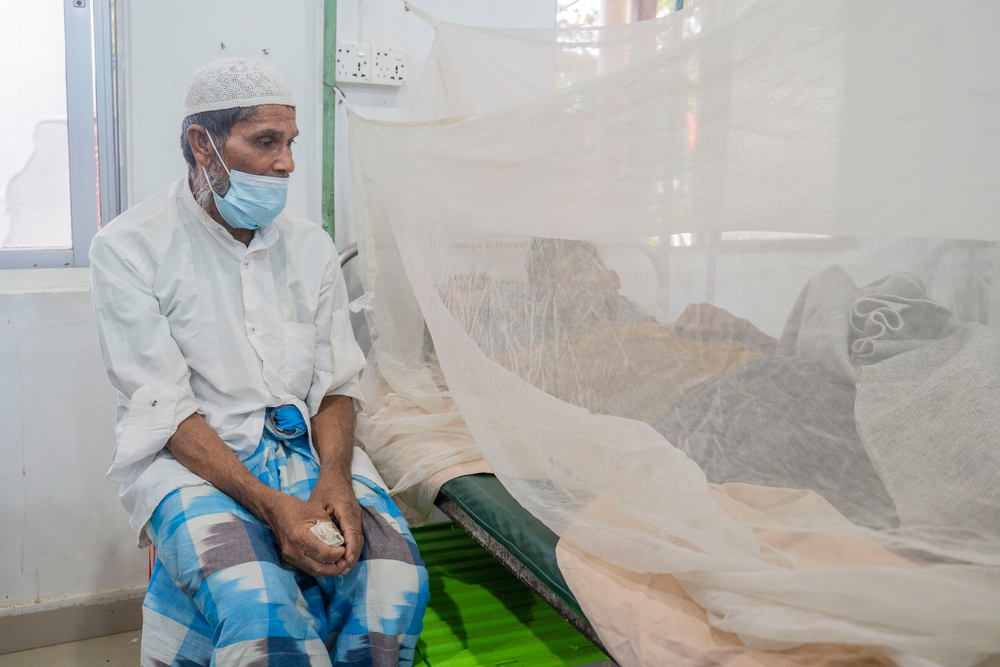
Rohingya father sitting at the bedside of his 21-year-old son, who was admitted to the Doctors Without Borders Kutupalong Hospital with dengue. Bangladesh 2022 © Saikat Mojumder/MSF
There are frequent outbreaks of scabies, dengue fever and cholera. Many refugees in the camps also suffer from chronic diseases such as heart disease, hypertension and type II diabetes, which can be exacerbated by environmental factors such as extreme heat and air pollution.

Abdullah is a 4-year-old Rohingya refugee who lives in Jamtoli camp. He has been suffering from scabies since December 2022. His whole family suffers from scabies. Bangladesh, 2023 © Farah Tanjee/MSF
Countries in Climate Crisis
Impacts on the environment
Violence and conflict
Across the Sahel, in sub-Saharan Africa, climate change has contributed to an imbalance of land available to livestock herders and farmers. The competition over resources and the authorities’ inability to negotiate access to land have resulted in conflict between the two groups, adding to the violence and insecurity across the region, to which we respond to the consequences of by providing medical care. Conflict, in turn, often causes people to become displaced.

Edward Nyam and his family have been living in Mbawa camp in Benue, Nigeria, since January 2018, when violence forced them to leave their home in Guma. Before they left, one of Edward’s sons was killed in the violence.
Nigeria’s ‘middle belt’ states host the largest numbers of internally displaced persons (IDPs) in the country, outside of the northeast. Most were uprooted by the so-called ‘farmer-herdsmen’ conflict. In Benue state, where an estimated 160,000 displaced people (IOM 2019), are scattered, displaced people live in either the one of eight official camps; in informal camps or settlements, – such as markets or schools – or among the ‘host’ community.
Benue, Nigeria, 2020 © MSF/Scott Hamilton
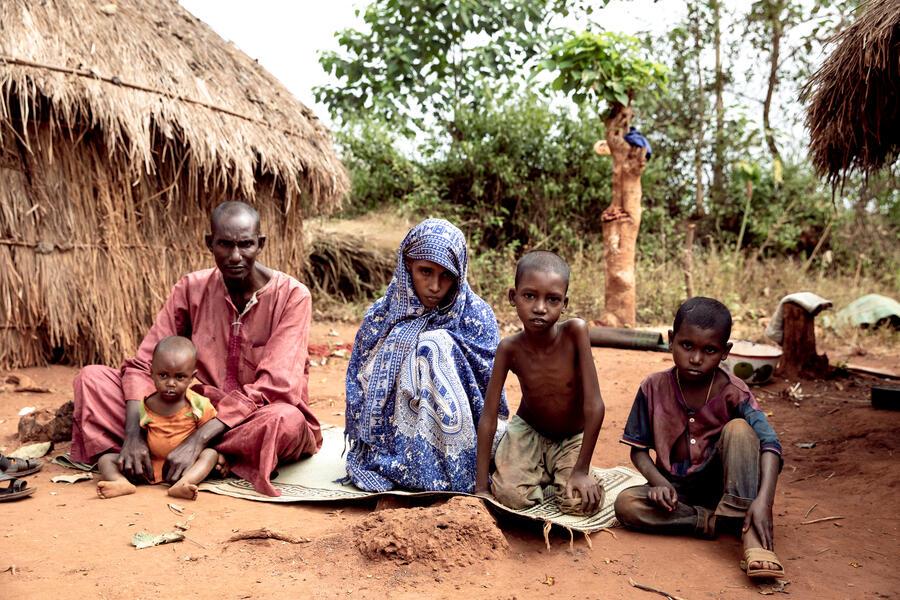
Seidi Bore, 45, Mariam Hamadou, 35, Harouna, 1, and Younoussa, 13, sit by their home in the Élevage IDP site, on the outskirts of Bambari, Ouaka, in the Central African Republic. More than 15,000 people live in this camp on the outskirts of Bambari.
Every member of this family except the youngest has been ill since they left their village of Boyo, 120 km away, in the midst of the conflict.
Mariam’s health condition deteriorated when she gave birth to Harouna. She was referred from the Doctors Without Borders health centre in Élevage to Bambari hospital, which we support.
The medical needs and daily struggles of the people of Ouaka are almost invisible to the international community and CAR remains a protracted ‘forgotten’ crisis. The situation in Ouaka reflects similar situations in other prefectures across the country. Communities in CAR face many persistent obstacles that prevent them from reaching medical care in time. The most serious barriers are displacement from their homes caused by the repeated cycles of violence, and the fact that, for most people, quality healthcare remains unaffordable and unavailable. The few health facilities that function are ill-equipped, have severe shortages of skilled medical professionals and supplies, or are simply out of people’s reach.
Central African Republic, December 2020 © Adrienne Surprenant/Collectif ITEM
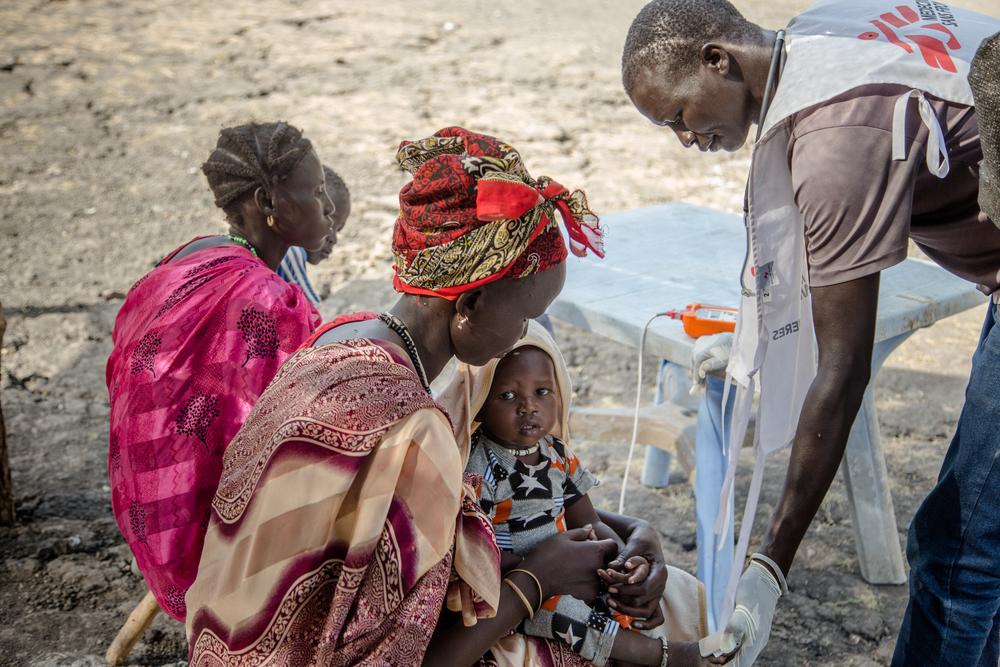
A Doctors Without Borders staff member checks a child’s health at the entrance of the Doctors Without Borders hospital in the Ulang, in northeastern South Sudan.
Ulang is a remote area near the border with Ethiopia, where people have lived through years of war and which is subject to frequent bouts of intercommunal fighting. South Sudan, 2019 © Igor Barbero
Extreme weather
Countries around the world are experiencing extreme weather events—and suffering the consequences. In February 2023, category 5 Cyclone Freddy hit Madagascar with wind speeds of 130mph, affecting over 85,000 people.
Although not nearly as devastating as the previous year's cyclones, Freddy arrived at a time when the Malagasy population, already vulnerable with 75% of the population living below the poverty line, also face peak malaria season and lean season. Stocks were depleted and food prices were reaching their peak.
In rural South Sudan, cattle are the cornerstone of people's livelihoods. But hundreds of thousands of cattle have died in the flooding in 2022, leave people extremely food insecure.
Below are the carcasses of cows that have died due to the flooding and the lack of pasture on the small high grounds where they have been taken by their owners, in Pagwir, Fangak County. Photo credit: Florence Miettaux
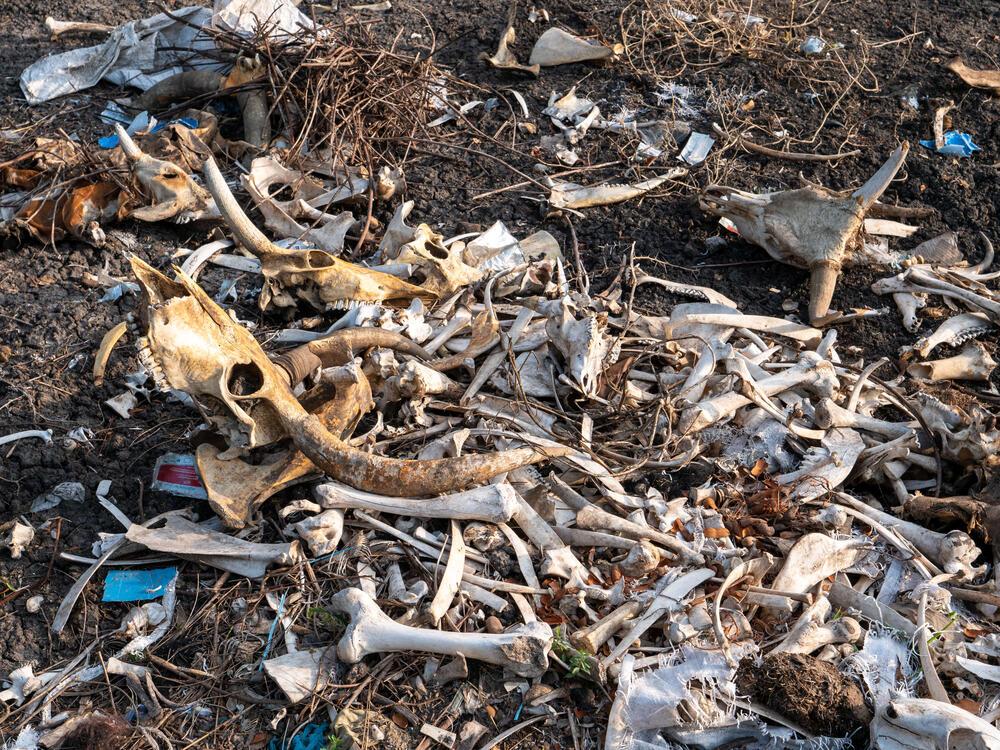
- Typhoons in the Philippines
In 2013, Typhoon Haiyan—one of the strongest super typhoons ever recorded—caused over 6,300 confirmed deaths and displaced four million people in the Philippines. Essential infrastructure were damaged or destroyed, and emergency supplies swept away. Photo credit: Julie Remy/MSF

More recently, Typhoon Rai hit the southern Philippines in December 2021, affecting mostly the Dinagat Island province and the outlying islands of Surigao City. Locals said they had not seen such a big storm, nor felt such strong winds, in decades. Roofs were torn off houses, schools and health centers, and trees were felled by the winds. Photo credit: Chenery Ann Lim
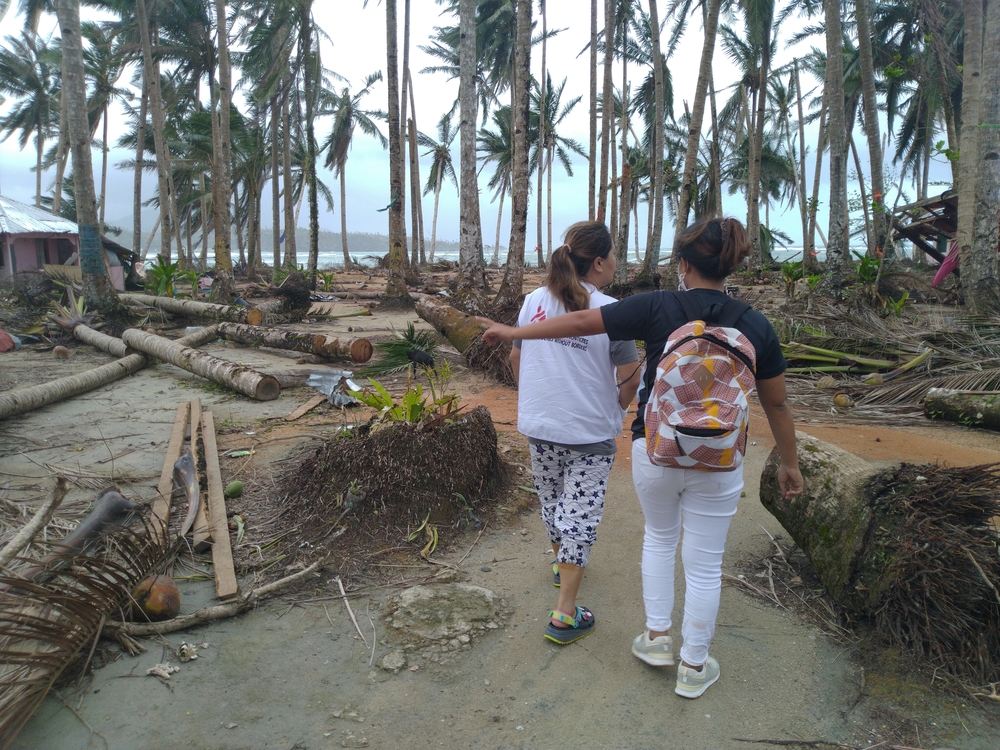
- Indonesia's year of disasters
In 2018 alone, Indonesia suffered multiple natural disasters. Earthquakes struck Lombok Island in July and August. A triple disaster of earthquake, tsunami, and liquefaction hit Palu, Central Sulawesi, in September. Photo credit: Sri Harjanti Wahyuningsih/MSF

In December, following the eruption of the Krakatoa volcano, a tsunami hit the Sunda Strait coast. Photo credit: Muhamad Suryandi/MSF
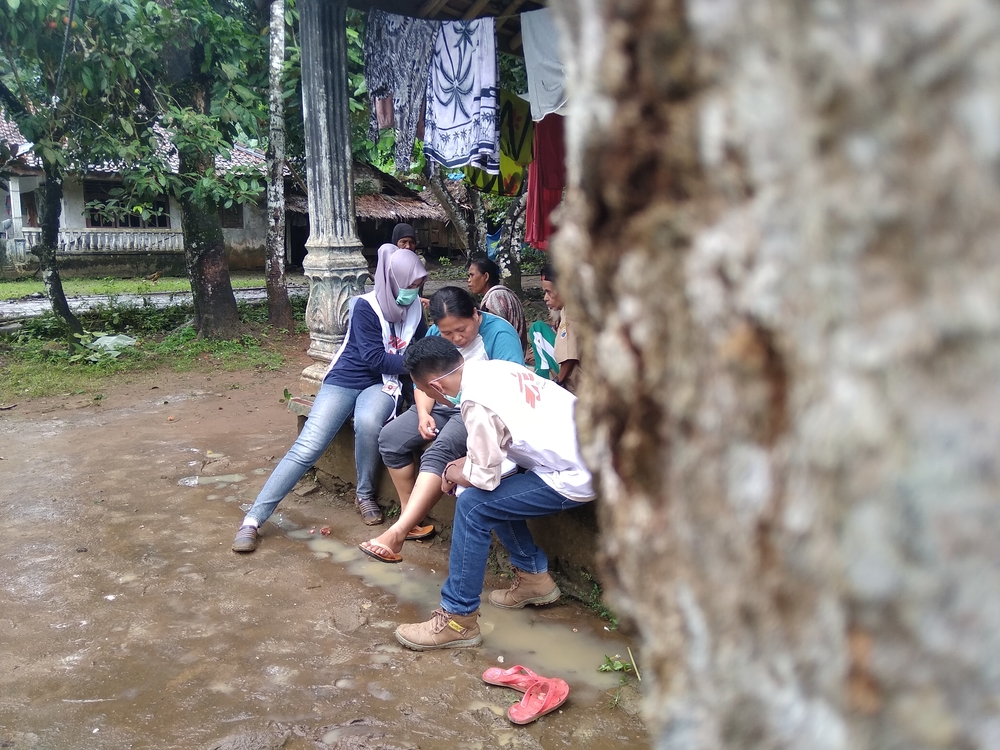
While Asia is no stranger to strong typhoons, various countries where we work have been experiencing extreme weather events that injure or displace local populations, who then require emergency humanitarian aid.
